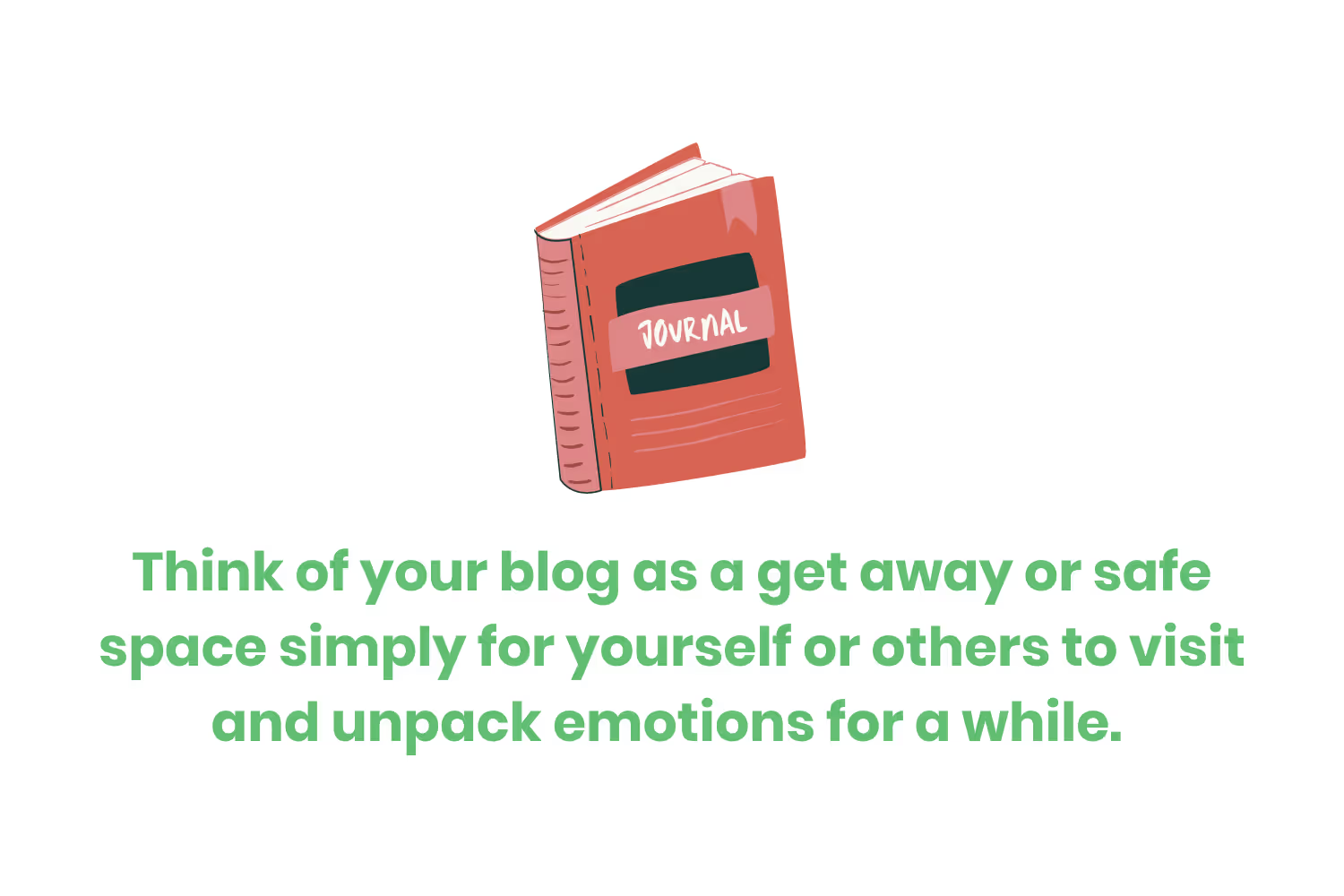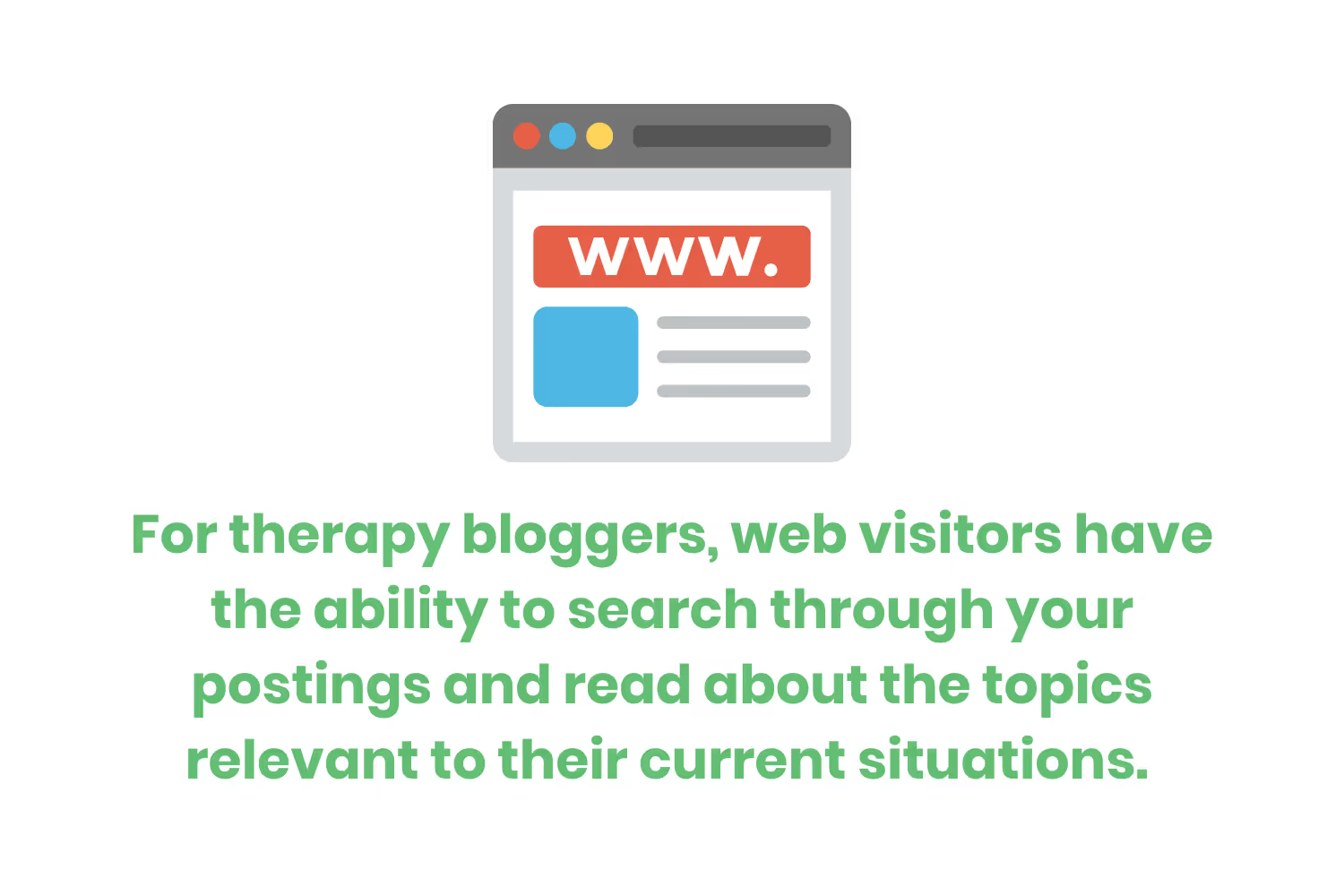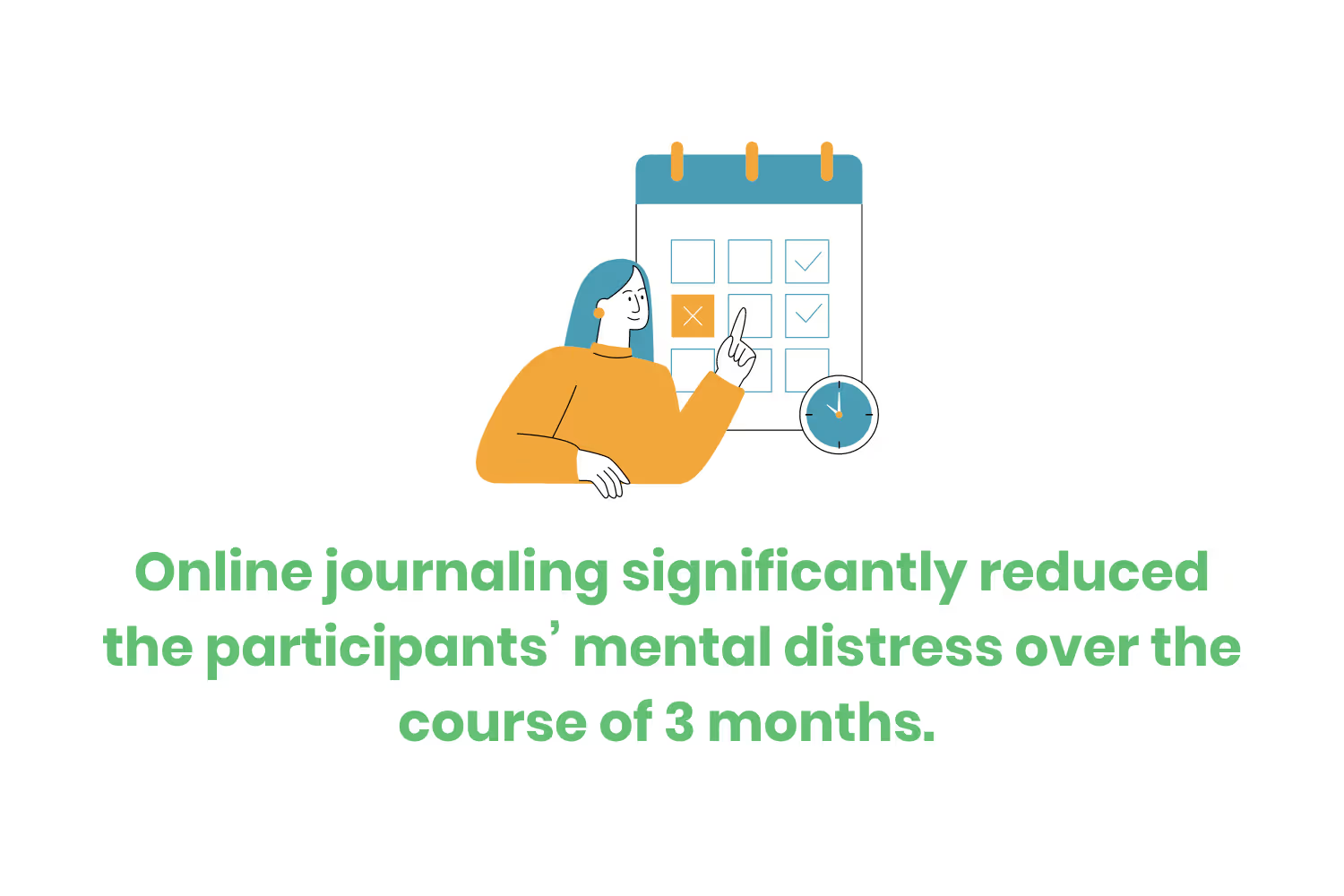Everything You Need to Know About Therapy Blogging
Journaling is a great hobby to have. If you’re like me, when I try to journal I can’t write as quickly as I’m thinking and forget what I wanted to write. Or sometimes the circumstances you are in, journaling is not always ideal or the most practical. This is where therapy blogging, the innovative way to journaling, takes the stage.

Anxiety disorders are the most common medical condition in the United States. Thus, it’s safe to say that everyone experiences anxiety or stress at some point in their life and how you manage it makes all the difference.
Oftentimes, mental health gets put on the backburner even during the toughest of seasons. The importance of prioritizing mental health is a large topic within the media, but are we putting those tips and tricks into practice when it counts most?

A simple and easy way to prioritize your well-being is through journaling; however, this isn’t a new concept.
74% of people who have journaled saw emotional venting as a benefit and 65% of those people saw journaling improve their ability to manage stress.
If someone hasn’t recommended journaling to you before, this statistic hopefully shows you the benefit that journaling can have in aiding you with life stressors and anxiety.
Journaling is a great hobby to have. If you’re like me, when I try to journal I can’t write as quickly as I’m thinking and forget what I wanted to write. Or sometimes the circumstances you are in, journaling is not always ideal or the most practical.
This is where therapy blogging, the innovative way to journaling, takes the stage.
What is Therapy Blogging?
Therapy blogging is essentially the virtual version of journaling. With therapy blogging, you’re utilizing media outlets to record your thoughts and feelings. It can look like and exist in many different ways.
Personal Use
Therapy blogging can be solely for personal use. This means creating your own website or social media account to express all your thoughts in one space.
Websites and social media aren’t the only outlets for creating your “therapy blog”. Even writing in the notes app on your phone or computer can exist as a form of therapy blogging. It can be as formal or informal as you want it to be.
It’s important to note that therapy blogging can be as public as you would like it to be. Whether or not you choose to share your blog with others is completely up to you.
Ways to ensure privacy are to not make the site public or choose to keep the social media accounts private. Writing anonymously is another way to keep your information confidential.
Public Use
The other route you can take with therapy blogging is a more social, interactive approach. Specifically for therapists, creating a therapy blog is a great way to reach new clientele. This could exist within your own site or a page that is completely separate.
By writing relevant blog posts that cater to your niche practice, you’re able to foster relationships with readers and increase brand awareness.
These blog posts can provide answers to common questions or coping mechanisms as well as strategies to issues related to your field that people are searching for on the web.
Since your blog is interactive, you can have people like, share, or comment on a response.
Benefits of Therapy Blogging
We have to note the importance of writing- or should I say blogging here. There are many benefits to therapy blogging for people and therapists alike.
Creates a Safe and Secure Environment
Think of your blog as a get away or safe space simply for yourself or others to visit and unpack emotions for a while. It serves as a healthy outlet to share thoughts and sometimes leave them there. After all, it’s called therapy blogging. There should be a sense of relief afterwards.

Encourages Creativity
Creating a blog can be a fun way to bring out a sense of creativity. With a bit of designing and planning, your blog can look any way you want it to. That is depending on what tools you are using to create your blog as well as your skill level with website design of course.
Whether you take a more simplistic or extravagant approach, your blog is yours so make it your own. For me, the designing process feels like its own form of therapy. Adding images, choosing fonts and colors to make your site aesthetically pleasing adds to the creation of a safe and secure space.
How you decide to write and what you decide to include in your blog postings also stirs up a sense of creative writing.
Improves Self-Reflection
One of the benefits of blogging is that you are able to hold all your information in one space. More likely it will be more detail oriented and specific than a written down journal entry. This provides an easy way for self-reflection.
Self-reflection is your ability to evaluate your actions and responses to certain situations. It is an important part of becoming self-aware and understanding your own behavioral processes and why things might affect you the way that they do.
Self-reflection gives you the ability to review your own personal growth and development. By reading past excerpts from your blog, it takes you back to certain periods of time and you will be able to see how certain experiences changed you through your writing.
Depending on the season of life you’re in, you might not want to share it. When you are out of it however, you might think differently. Sharing your excerpts may help someone that is going through a similar experience.
For therapy bloggers, web visitors have the ability to search through your postings and read about the topics relevant to their current situations. This may encourage them to reach out to you further.

IHelps with Anxiety and Depression
Everyone experiences stress or anxiety at some point in their lives. Some do not experience anxiety as severely as others.
There are different types of anxiety disorders that provoke excessive worry and fear. Some become so severe that they affect day-to-day life.
In the United States, more than 31% of people experience an anxiety disorder at some point in their life.
The World Health Organization defines depression as, “persistent sadness and a lack of interest or pleasure in previously rewarding or enjoyable activities.”
Oftentimes, anxiety and depression go hand in hand. Anxiety can occur as a symptom of clinical depression and depression can be occur because of an anxiety disorder.
Blogging can help alleviate anxieties. For someone who is combatting both anxiety and depression, blogging is a healthy way to recognize and process those feelings and potentially understand where it’s stemming from.
In fact, a study conducted by Dr. Pennebaker concluded that over the course of just 4 days, writing about emotionally traumatic events and feelings resulted in short-term increases in physiological arousal and long-term decreases in a variety of medical conditions.
Another study in 2018 assessed 70 adults experiencing elevated anxiety levels. The study concludes that online journaling significantly reduced the participants’ mental distress over the course of 3 months.
While journaling is not a substitute for therapy by any means, therapists often recommend journaling to help manage and keep track of emotions.
If you have trouble opening up to others or recalling specific situations that you are trying to share with your therapist, pulling up your blogs and going through them helps give your therapist a better understanding of what message you’re trying to communicate.

Connect with Others Through Similar Experiences
Whether you decide to keep your blog private, public, or you are creating a therapy blog for your practice, one advantage with blogging that you are not able to have with journaling is the connection with other people.
Sharing your thoughts and feelings online can be very scary as it is a vulnerable thing. It’s important to always remind yourself that in whatever you’re going through, you’re not alone. Therapy blogging gives you the opportunity to see support from other people near and far.
How Do I Start Therapy Blogging?
Therapy blogging is very simple. All you need to do is create the space that you are going to be blogging in.
This could be through a website, some type of social media outlet, or even just in your notes app on your phone or computer. Once this happens, you’re all set to start writing.
If you are creating a therapy blog for your practice, creating a website is going to be the best way for people to interact with your site.
Write relevant posts that cater to your specific audience or specialized practice. Make it interactive so that users can respond or ask questions. Give people the option to respond publicly or anonymously. Market your blog site within your practice.
Potential Blog Prompts
If you don’t know where to start, here are some ideas to start your own blog entries.
- What are you thankful for today?
- What are you concerned about right now? Why? Are you able to do anything right now to aid your concern?
- What was the best and worst part of your day? Why?
- Record any intrusive thoughts. (Yes, those stippling comments in your head that just keep playing over and over. Trust me, it helps.)
- Write out a detailed summary of your day.
- List any goals you have as well as a timeframe and why you think this goal would benefit your well-being.
- Something you want to or wish you would say or have said to somebody.
One thing to note about therapy blogging is that it looks different for everyone. There is no right or wrong way to do it. Its purpose is for you to decompress and feel a sense of relief from work, school, relationships or whatever else it may be. It can also exist to interact and relate with others.
With that, write whatever you feel like writing about and include whatever pops up into mind. What you come up with will surprise you.
Conclusion
Therapy blogging offers many benefits for managing anxiety as well as other mental health conditions such as depression, which commonly goes hand in hand with anxiety.
Therapists can utilize therapy blogging to reach new people while also increasing brand awareness through web interactions. This gives you insight on specific clientele.
Whether you’ve never journaled before or are looking for something new to try, therapy blogging is a great way to express thoughts and feelings while adding a personal, creative touch to it. It’s easy and can take place at any time with the touch of a few buttons. Literally.
Emphasize your product's unique features or benefits to differentiate it from competitors
In nec dictum adipiscing pharetra enim etiam scelerisque dolor purus ipsum egestas cursus vulputate arcu egestas ut eu sed mollis consectetur mattis pharetra curabitur et maecenas in mattis fames consectetur ipsum quis risus mauris aliquam ornare nisl purus at ipsum nulla accumsan consectetur vestibulum suspendisse aliquam condimentum scelerisque lacinia pellentesque vestibulum condimentum turpis ligula pharetra dictum sapien facilisis sapien at sagittis et cursus congue.
- Pharetra curabitur et maecenas in mattis fames consectetur ipsum quis risus.
- Justo urna nisi auctor consequat consectetur dolor lectus blandit.
- Eget egestas volutpat lacinia vestibulum vitae mattis hendrerit.
- Ornare elit odio tellus orci bibendum dictum id sem congue enim amet diam.
Incorporate statistics or specific numbers to highlight the effectiveness or popularity of your offering
Convallis pellentesque ullamcorper sapien sed tristique fermentum proin amet quam tincidunt feugiat vitae neque quisque odio ut pellentesque ac mauris eget lectus. Pretium arcu turpis lacus sapien sit at eu sapien duis magna nunc nibh nam non ut nibh ultrices ultrices elementum egestas enim nisl sed cursus pellentesque sit dignissim enim euismod sit et convallis sed pelis viverra quam at nisl sit pharetra enim nisl nec vestibulum posuere in volutpat sed blandit neque risus.

Use time-sensitive language to encourage immediate action, such as "Limited Time Offer
Feugiat vitae neque quisque odio ut pellentesque ac mauris eget lectus. Pretium arcu turpis lacus sapien sit at eu sapien duis magna nunc nibh nam non ut nibh ultrices ultrices elementum egestas enim nisl sed cursus pellentesque sit dignissim enim euismod sit et convallis sed pelis viverra quam at nisl sit pharetra enim nisl nec vestibulum posuere in volutpat sed blandit neque risus.
- Pharetra curabitur et maecenas in mattis fames consectetur ipsum quis risus.
- Justo urna nisi auctor consequat consectetur dolor lectus blandit.
- Eget egestas volutpat lacinia vestibulum vitae mattis hendrerit.
- Ornare elit odio tellus orci bibendum dictum id sem congue enim amet diam.
Address customer pain points directly by showing how your product solves their problems
Feugiat vitae neque quisque odio ut pellentesque ac mauris eget lectus. Pretium arcu turpis lacus sapien sit at eu sapien duis magna nunc nibh nam non ut nibh ultrices ultrices elementum egestas enim nisl sed cursus pellentesque sit dignissim enim euismod sit et convallis sed pelis viverra quam at nisl sit pharetra enim nisl nec vestibulum posuere in volutpat sed blandit neque risus.
Vel etiam vel amet aenean eget in habitasse nunc duis tellus sem turpis risus aliquam ac volutpat tellus eu faucibus ullamcorper.
Tailor titles to your ideal customer segment using phrases like "Designed for Busy Professionals
Sed pretium id nibh id sit felis vitae volutpat volutpat adipiscing at sodales neque lectus mi phasellus commodo at elit suspendisse ornare faucibus lectus purus viverra in nec aliquet commodo et sed sed nisi tempor mi pellentesque arcu viverra pretium duis enim vulputate dignissim etiam ultrices vitae neque urna proin nibh diam turpis augue lacus.




